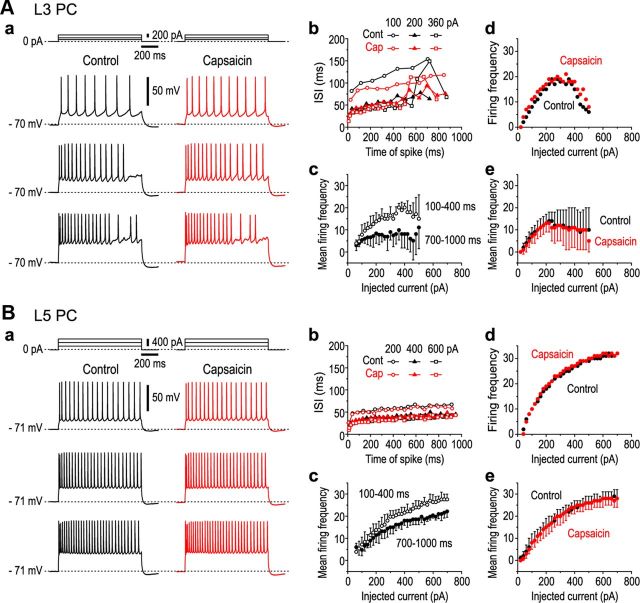Figure 10.
Effects of capsaicin on spike trains induced by current pulse injections. Aa, Ba, Sample traces of spike trains induced in an L3 PC (Aa) and in an L5 PC (Ba) by injection of current pulses with intensities of 100, 200, and 360 pA and with intensities of 200, 400, and 600 pA (top), respectively, in the absence (black traces) and presence (red traces) of 5 μm capsaicin. Ab, Bb, Plots of ISIs of the spike trains in the L3 and L5 PCs (shown in Aa and Ba, respectively) against the time after the onset of current pulse with respective intensities. Ac, Bc, Relationships between the mean (±SD) firing frequencies and intensities of current pulses obtained during the time periods of 100–400 ms (open circles) and 700–1000 ms (filled circles) after the onset of the current pulse in the L3 (n = 5; Ac) and L5 PCs (n = 5; Bc). Ad, Bd, Relationships between firing frequencies and intensities of current pulses obtained during the entire duration of current pulses in the L3 and L5 PCs (shown in Aa and Ba, respectively) in the absence (black circles) and presence (red circles) of capsaicin. Ae, Be, Relationship between the mean (±SD) firing frequencies and intensities of current pulses obtained during the entire duration of current pulses in L3 (n = 5; Ae) and L5 PCs (n = 5; Be) in the absence (black circles) and presence (red circles) of capsaicin.

